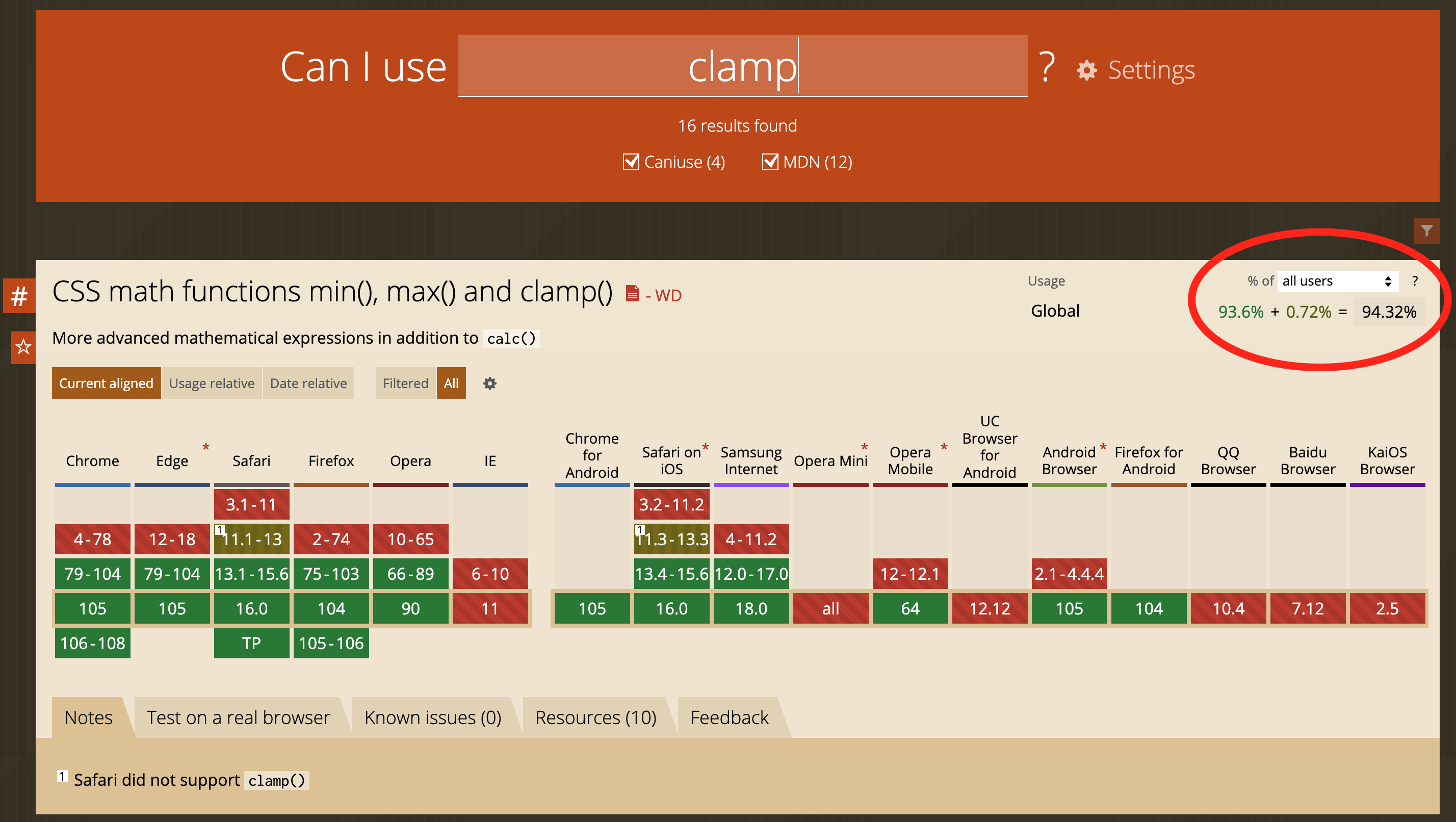Styling / CSS
Theme
- A theme should help developers style quickly and consistently. It should contain definitions/variables for: colors, buttons, forms, fonts, breakpoints, easings, typography.
Color Naming
Besides basic color definitions (like primary, secondary, grey, etc.), there should be specific definitions with a context in mind (e.g. “colorUiLabel” with “colorUiLabelHover”). If there is no meaningful specific context for multiple uses, it is better to just use the basic colors.
Buttons
Define buttons or form elements very specifically to reuse the theme structure in other applications.
buttons: {
primaryBg: "#ea5d1a",
primaryBgHover: "#f08d5e",
primaryBorder: "none",
primaryBorderHover: "none",
primaryBorderRadius: "4px",
primaryHeightMobile: "46px",
primaryFontSizeMobile: "16px",
primaryHeightTablet: "46px",
primaryFontSizeTablet: "16px",
primaryHeightDesktop: "46px",
primaryFontSizeDesktop: "16px",
...
}
Typography
For Typography you can take a step further and use css in theme:
typography: {
headline650: (disableMargin?: boolean) => css`
font-size: 30px;
line-height: 38px;
font-weight: 900;
margin-bottom: ${disableMargin ? 0 : "40px"};
${({ theme }) => theme.breakpoints.m.mediaQuery} {
font-size: 68px;
line-height: 94px;
margin-bottom: ${disableMargin ? 0 : "56px"};
}
`,
headline600: (disableMargin?: boolean) => css`
font-size: 30px;
line-height: 38px;
font-weight: 900;
margin-bottom: ${disableMargin ? 0 : "32px"};
${({ theme }) => theme.breakpoints.m.mediaQuery} {
font-size: 50px;
line-height: 58px;
margin-bottom: ${disableMargin ? 0 : "36px"};
}
`,
...
paragraph250: (disableMargin?: boolean) => css`
font-size: 16px;
line-height: 30px;
margin-bottom: ${disableMargin ? 0 : "24px"};
font-weight: 400;
${({ theme }) => theme.breakpoints.m.mediaQuery} {
font-size: 18px;
}
`,
paragraph200: (disableMargin?: boolean) => css`
font-size: 16px;
line-height: 30px;
font-weight: 400;
margin-bottom: ${disableMargin ? 0 : "18px"};
`,
...
Spacing
One major part for consistent look and easy styling is defined spacing. Dynamic and Static are useful categories:
const spacingValues: SpacingValues = {
none: {
xs: 0,
s: 0,
m: 0,
l: 0,
xl: 0,
xxl: 0,
},
//dynamic
d150: {
xs: 4,
s: 4,
m: 4,
l: 8,
xl: 8,
xxl: 8,
},
...
//static
s150: 4,
s200: 8,
s250: 12,
...
Modern CSS3 Stuff / Browser Support
Check support with CanIUse.com.
Relevant value: “All Users/Europe”

Frontend/Site
Anything with a usage share of >= 93% can be used freely.
Anything with a usage share of >= 90% can be used if the basic functionality is ensured. This means: The site must still work if this feature is not supported, but styling may slightly differ or behavior may not feel perfect. Depending on the feature or deviation in behavior, this threshold may be lower. The final decision lies with the responsible stylist.
Admin
Everything supported by Chrome, Firefox, and Safari can be used.
Grid and Flex
Use CSS Grid and Flexbox to align elements. But only use them when necessary — it’s not required to set display: flex on every div.
export const Wrapper = styled.div`
display: grid;
grid-template-columns: repeat(2, 1fr);
...
List and ListItem Styling
When styling a list to columns you should take the styling to the list and not to the item-block.
// List.tsx
<List>
{blocks.map((block) => (
<Button key={block.key} data={block.props} />
))}
</List>;
export const List = styled.div`
display: flex;
flex-wrap: wrap;
`;
// Button.tsx
export const ButtonBlock = styled.div`
width: 25%;
`;
// List.tsx
<List>
{blocks.map((block) => (
<Item key={block.key}>
<Button data={block.props} />
</Item>
))}
</List>;
export const List = styled.div`
display: flex;
flex-wrap: wrap;
`;
export const Item = styled.div`
width: 25%;
`;
Recommendation: Empty Lines
For better code readability, it is recommended to make a empty line between css and every form of selector:
const ImageWrapper = styled.div`
display: inline-block;
max-height: 200px;
max-width: 200px;
cursor: pointer;
${({ theme }) => theme.breakpoints.m.mediaQuery} {
max-width: 160px;
max-height: 160px;
}
${({ theme }) => theme.breakpoints.l.mediaQuery} {
max-width: 200px;
max-height: 200px;
}
&:hover {
opacity: 0.5;
}
`;
const ImageWrapper = styled.div`
display: inline-block;
max-height: 200px;
max-width: 200px;
cursor: pointer;
${({ theme }) => theme.breakpoints.m.mediaQuery} {
max-width: 160px;
max-height: 160px;
}
${({ theme }) => theme.breakpoints.l.mediaQuery} {
max-width: 200px;
max-height: 200px;
}
&:hover {
opacity: 0.5;
}
`;
Mobile First Approach
When styling a site, block or component, always start with the mobile layout. The Mobile First approach helps us to reach the majority of users and provides them with a good-looking page.
Inline Styles
If possible, don’t use inline styles, use Emotion or Styled Components instead.
<IconButton onClick={() => handleDelete(key)} style={{ padding: "0 0 8px 8px" }}>
import { IconButton as MuiIconButton } from "@mui/material";
const IconButton = styled(MuiIconButton)(() => ({
padding: "0 0 8px 8px",
}));
<IconButton onClick={() => handleDelete(key)} />;
or even better name the button after its function.
import { IconButton } from "@mui/material";
const DeleteButton = styled(IconButton)(() => ({
padding: "0 0 8px 8px",
}));
<DeleteButton onClick={() => handleDelete(key)} />;